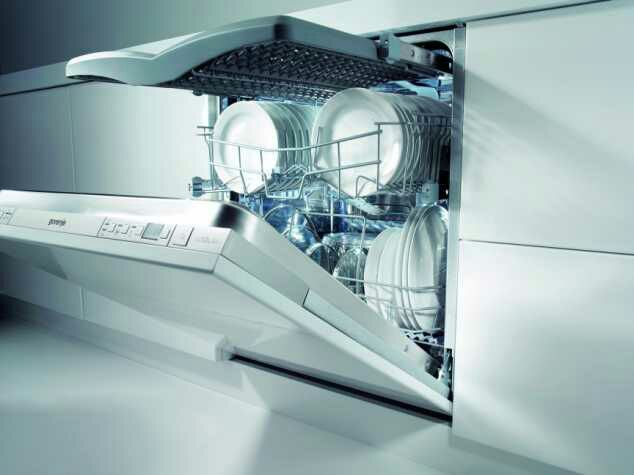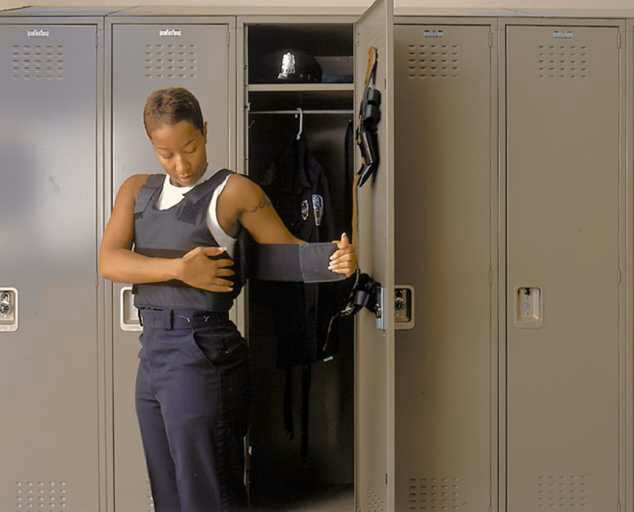What might the world be without GPS or WiFi? Without a portion of the ladies on this rundown, the world could be an increasingly risky spot. Less protected, or Less intriguing. Your eye-glasses (on the off chance that you wear glasses) could have been hazy, less clear than they are present. Motion pictures wouldn't appear to be identical. Somewhere in the range of 1790 and 1984, just 1.5% of the licenses made originated from ladies. Today, that number has hopped to 20%. In a world loaded up with men, these are the innovations which emerge the most. They're not things you would connect with ladies. Innovations are intriguing. They come to fruition after numerous years, decades, or hundreds of years of development. For example, Anna Connelly was a lady innovator. She developed an emergency exit. In any case, it was not even close to the outer staircase emergency exits we use today. Around at that point, numerous people invented emergency exits which really resemble our advanced ones. In any case, the ladies on this rundown made exceptional commitments to the universe of innovation. What's more, their lives outside of science were frequently similarly as amazing. In addition to the fact that they were master researchers, they were pioneers; they first of their sort. A larger number of times than not, they were promptly perceived for their commitments to the world. Some of the time they needed to battle. Without these developments, the world would have been not quite the same as what it is currently.
14. Dishwasher.
Josephine Cochran was wealthy and entertained at home often. But after-party clean up was a mess. Servants had an enormous load of dishes to do. In 1850, Joel Houghton designed a hand-cranked dishwasher. L. A. Alexander improved it with a gear mechanism. But both devices sucked. When Josephine’s husband William died, she became motivated to finish her design. She wanted to develop a dishwashing machine that actually got the job done. Josephine designed her dishwasher in a shed behind her house with an assisting mechanic. She designed separate compartments for plates, cups, and saucers. And her design was the first to use water pressure. Josephine patented the “First Practical Dish Washing Machine” in 1886. Later, she won first prize for “best mechanical construction, durability, and adaption.” By word of mouth, she started getting orders from restaurants and hotels. A factory opened 10 years after her first patent.
13. Monopoly.
Two designers have the credit for inventing Monopoly Charles Darrow and Elizabeth Magie. At the time, Magie was a writer, comedian, actress, and an engineer. Monopoly was at first used for educational purposes, a way to show the economic consequences and ill effects of land monopolies and prove the value of an economy that rewards wealth creation. In the beginning, the game was also used to promote women’s rights. The game’s original title was “The Landlord’s Game.” It was first patented in 1904, but Monopoly existed as early as 1902. It was one of the first board games to use a “continuous path,” a board designed without well-defined start and end spaces. The game soon spread by word of mouth. And professors used it on university campuses as a teaching tool. By 1933, Monopoly was near full evolution and looked much like the Monopoly we know and love today.
12. Wireless Technology.
Once named “the most beautiful woman in the world,” Hedy Lamarr was a famous and fortunate Hollywood actress. She married the third richest man in Austria, Friedrich Mandl, in 1933. She was also intelligent. While Hedy and Friedrich attended prestigious business meetings, she learned about applied science. Bored with acting, she decided to help in the war effort. During World War II, German submarines began to torpedo passenger ships. Hedy said, “I’ve got to invent something that will put a stop to that.” So she developed “spread spectrum” and “frequency hopping” technology. She obtained a patent in 1942. The U.S. Navy adopted technology in 1962. And the U.S. military used it during a blockade of Cuba. The principles of her work now serve as the basis for many modern technologies, including GPS, Wi-Fi, and Bluetooth. She joined the National Inventors Hall of Fame in 2014.
11. Kevlar (Bulletproof Vests).
Stephanie Kwolek was a chemist at DuPont for over 40 years. She developed the synthetic fiber Kevlar in 1965. Kevlar is five times stronger than steel. This super amazing fiber has over 200 useful applications. Today, it’s used as military personal armor like combat helmets, ballistic face masks, and bulletproof vests. Firefighters, police officers, and SWAT teams use Kevlar every day. It’s lighter and thinner than equal gear made of traditional materials. It’s also used in music because it has useful acoustic properties. The cables on some suspension bridges are Kevlar. It’s also found within stadium roofs and smartphones. The Georgia Institute of Technology believes I could generate electricity in the future. Kwolek is the only female employee of DuPont awarded the Lavoisier Medal for outstanding technical achievement. In 1995, she became the fourth woman added to the National Inventors Hall of Fame.
10. Computer Programming Language.
Grace Hopper was a leader and innovator of computer programming language. “Programming language” is the basic building block for computer software, allowing humans to tell computers what to do. Grace Hopper worked as a programmer on the first computer, specifically the Harvard Mark 1 in 1944. She led the way in the field of software development concepts, making massive contributions in the shift from primitive to advanced computing technologies. She advocated the idea of a machine-independent programming language. Her development, COBOL, was one of the first high-level computer programming languages. She also popularized the term “computer bug” or “debugging” for fixing computer glitches.
9. Windshield Wipers.
Drivers were skeptical when Mary Anderson invented the first manual windshield wipers in 1903. They thought it was safer to drive with rain and snow obscuring the road than to pull a lever to clear it. (Another woman inventor, Charlotte Bridgwood, invented an automatic version with an electric roller in 1917. It didn't take off, either.) But by the time Anderson's patent expired in 1920, windshield wipers were cleaning up. Cadillac was the first to include them in every car model, and other companies soon followed.
8. Disposable Diaper.
Marion Donovan didn't take all the mess out of diaper changing when she patented the waterproof Boater in 1951. But she changed parenting and well, babies forever. The waterproof diaper cover, originally made with a shower curtain, was first sold at Saks Fifth Avenue. Donovan sold the patent to the Keko Corporation for $1 million and then created an entirely disposable model a few years later. Pampers was born in 1961.
7. Signal Flares.
Communication between ships/planes was once limited to colored flags, lanterns, and screaming things like "Thar she blows!" really loudly. Martha Coston didn't come up with the idea for signal flares all by herself. She found plans in a notebook that belonged to her late husband. The determined widow spent 10 years working with chemists and pyrotechnics experts to make the idea a reality. But she was only named administratrix in the 1859 patent Mr. Coston got credited as the inventor.
6. Beer.
We don’t know who invented the first formula for beer. But women were the first brewers, servers, and sellers of alcohol in society. Drinking beer at the local bar has origins with all signs pointing to women. Since the dawn of man, women were definitely brewing and selling a lot of beer. For thousands of years, we knew them as “brewsters” or “ale-wives.” This dates far back, 7,000 years ago, to ancient Mesopotamian and Sumerian civilizations. Brewers held the only profession deriving social sanction and divine protection from female goddesses Ninkasi, Siris, and Siduri to be exact. By law, women were the exclusive brewers in Norse society. And again in ancient Finland. In England, the woman made beer in their homes by tradition. And the sale of alcohol was a great source of income for many households. Only in the late 18th century did gender-neutral methods for brewing beer come about.
5. Car Heater.
The first car heater, which directed air from over the engine to warm the chilly toes of aristocratic 19th-century motorists, was invented by Margaret A. Wilcox in 1893. She also invented combined clothes and dishwasher.
4. Fire Escape.
It was first designed in 1887 by Anna Connelly.
3. Life Raft.
One day in 1882, Maria Beasley looked out at the sea and said, “People should, like, stop dying in huge transportation disasters.” And then she invented life rafts. Beasley also invented the machine for making barrels, and it made her really rich.
2. Medical Syringe.
Wonders of modern medicine. In 1899, Letitia Geer invented a medical syringe that could be operated with only one hand. Remember her the next time your doctor injects you with only one hand.
1. CCTV.
Marie Van Brittan Brown’s system for closed-circuit television security, patented in 1969, was intended to help people ensure their own security, as police were slow to respond to calls for help in her New York City neighborhood. Her invention forms the basis for modern CCTV systems used for home security and police work today.
14. Dishwasher.
Josephine Cochran was wealthy and entertained at home often. But after-party clean up was a mess. Servants had an enormous load of dishes to do. In 1850, Joel Houghton designed a hand-cranked dishwasher. L. A. Alexander improved it with a gear mechanism. But both devices sucked. When Josephine’s husband William died, she became motivated to finish her design. She wanted to develop a dishwashing machine that actually got the job done. Josephine designed her dishwasher in a shed behind her house with an assisting mechanic. She designed separate compartments for plates, cups, and saucers. And her design was the first to use water pressure. Josephine patented the “First Practical Dish Washing Machine” in 1886. Later, she won first prize for “best mechanical construction, durability, and adaption.” By word of mouth, she started getting orders from restaurants and hotels. A factory opened 10 years after her first patent.
13. Monopoly.
Two designers have the credit for inventing Monopoly Charles Darrow and Elizabeth Magie. At the time, Magie was a writer, comedian, actress, and an engineer. Monopoly was at first used for educational purposes, a way to show the economic consequences and ill effects of land monopolies and prove the value of an economy that rewards wealth creation. In the beginning, the game was also used to promote women’s rights. The game’s original title was “The Landlord’s Game.” It was first patented in 1904, but Monopoly existed as early as 1902. It was one of the first board games to use a “continuous path,” a board designed without well-defined start and end spaces. The game soon spread by word of mouth. And professors used it on university campuses as a teaching tool. By 1933, Monopoly was near full evolution and looked much like the Monopoly we know and love today.
12. Wireless Technology.
Once named “the most beautiful woman in the world,” Hedy Lamarr was a famous and fortunate Hollywood actress. She married the third richest man in Austria, Friedrich Mandl, in 1933. She was also intelligent. While Hedy and Friedrich attended prestigious business meetings, she learned about applied science. Bored with acting, she decided to help in the war effort. During World War II, German submarines began to torpedo passenger ships. Hedy said, “I’ve got to invent something that will put a stop to that.” So she developed “spread spectrum” and “frequency hopping” technology. She obtained a patent in 1942. The U.S. Navy adopted technology in 1962. And the U.S. military used it during a blockade of Cuba. The principles of her work now serve as the basis for many modern technologies, including GPS, Wi-Fi, and Bluetooth. She joined the National Inventors Hall of Fame in 2014.
11. Kevlar (Bulletproof Vests).
Stephanie Kwolek was a chemist at DuPont for over 40 years. She developed the synthetic fiber Kevlar in 1965. Kevlar is five times stronger than steel. This super amazing fiber has over 200 useful applications. Today, it’s used as military personal armor like combat helmets, ballistic face masks, and bulletproof vests. Firefighters, police officers, and SWAT teams use Kevlar every day. It’s lighter and thinner than equal gear made of traditional materials. It’s also used in music because it has useful acoustic properties. The cables on some suspension bridges are Kevlar. It’s also found within stadium roofs and smartphones. The Georgia Institute of Technology believes I could generate electricity in the future. Kwolek is the only female employee of DuPont awarded the Lavoisier Medal for outstanding technical achievement. In 1995, she became the fourth woman added to the National Inventors Hall of Fame.
10. Computer Programming Language.
Grace Hopper was a leader and innovator of computer programming language. “Programming language” is the basic building block for computer software, allowing humans to tell computers what to do. Grace Hopper worked as a programmer on the first computer, specifically the Harvard Mark 1 in 1944. She led the way in the field of software development concepts, making massive contributions in the shift from primitive to advanced computing technologies. She advocated the idea of a machine-independent programming language. Her development, COBOL, was one of the first high-level computer programming languages. She also popularized the term “computer bug” or “debugging” for fixing computer glitches.
9. Windshield Wipers.
Drivers were skeptical when Mary Anderson invented the first manual windshield wipers in 1903. They thought it was safer to drive with rain and snow obscuring the road than to pull a lever to clear it. (Another woman inventor, Charlotte Bridgwood, invented an automatic version with an electric roller in 1917. It didn't take off, either.) But by the time Anderson's patent expired in 1920, windshield wipers were cleaning up. Cadillac was the first to include them in every car model, and other companies soon followed.
8. Disposable Diaper.
Marion Donovan didn't take all the mess out of diaper changing when she patented the waterproof Boater in 1951. But she changed parenting and well, babies forever. The waterproof diaper cover, originally made with a shower curtain, was first sold at Saks Fifth Avenue. Donovan sold the patent to the Keko Corporation for $1 million and then created an entirely disposable model a few years later. Pampers was born in 1961.
7. Signal Flares.
Communication between ships/planes was once limited to colored flags, lanterns, and screaming things like "Thar she blows!" really loudly. Martha Coston didn't come up with the idea for signal flares all by herself. She found plans in a notebook that belonged to her late husband. The determined widow spent 10 years working with chemists and pyrotechnics experts to make the idea a reality. But she was only named administratrix in the 1859 patent Mr. Coston got credited as the inventor.
6. Beer.
We don’t know who invented the first formula for beer. But women were the first brewers, servers, and sellers of alcohol in society. Drinking beer at the local bar has origins with all signs pointing to women. Since the dawn of man, women were definitely brewing and selling a lot of beer. For thousands of years, we knew them as “brewsters” or “ale-wives.” This dates far back, 7,000 years ago, to ancient Mesopotamian and Sumerian civilizations. Brewers held the only profession deriving social sanction and divine protection from female goddesses Ninkasi, Siris, and Siduri to be exact. By law, women were the exclusive brewers in Norse society. And again in ancient Finland. In England, the woman made beer in their homes by tradition. And the sale of alcohol was a great source of income for many households. Only in the late 18th century did gender-neutral methods for brewing beer come about.
5. Car Heater.
The first car heater, which directed air from over the engine to warm the chilly toes of aristocratic 19th-century motorists, was invented by Margaret A. Wilcox in 1893. She also invented combined clothes and dishwasher.
4. Fire Escape.
It was first designed in 1887 by Anna Connelly.
3. Life Raft.
One day in 1882, Maria Beasley looked out at the sea and said, “People should, like, stop dying in huge transportation disasters.” And then she invented life rafts. Beasley also invented the machine for making barrels, and it made her really rich.
2. Medical Syringe.
Wonders of modern medicine. In 1899, Letitia Geer invented a medical syringe that could be operated with only one hand. Remember her the next time your doctor injects you with only one hand.
1. CCTV.
Marie Van Brittan Brown’s system for closed-circuit television security, patented in 1969, was intended to help people ensure their own security, as police were slow to respond to calls for help in her New York City neighborhood. Her invention forms the basis for modern CCTV systems used for home security and police work today.


















Trending